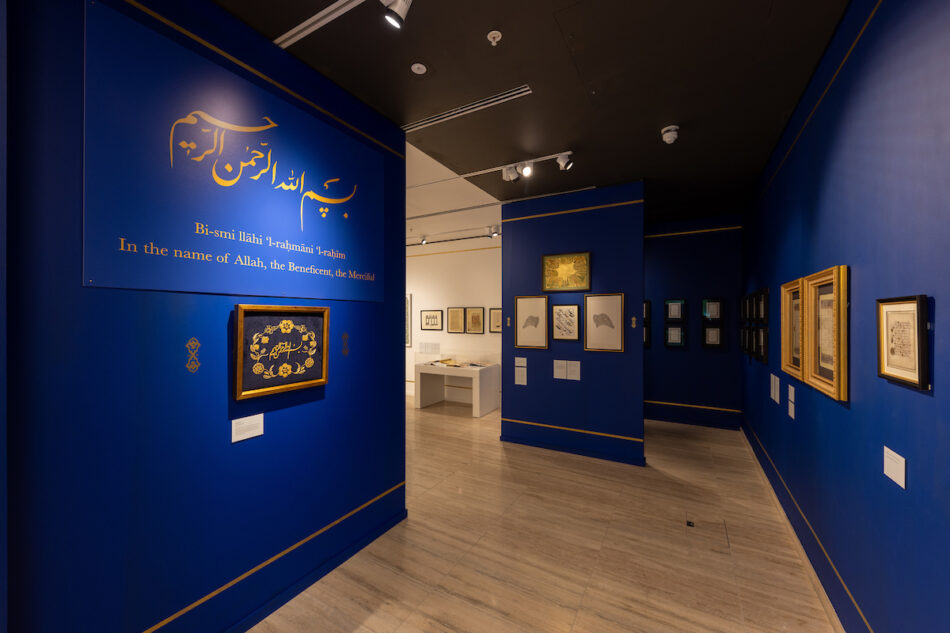
-
Status
Applications Open -
Date
22 Sep 2023 to 10 Jun 2024 -
Location
Aga Khan Centre Gallery
Exploring the Quran through manuscripts, artefacts, recorded sound, and contemporary art from artists Mobeen Akhtar, Veeda Ahmed, Jethro Buck, Samantha Buckley, Jung Byun, Khulood Da’mi, Elisabeth Deane, Yasmin Hayat, Rizwan Ahmed Khan, Saad Qureshi, Masako Newton, and Daryoush Mohammad Poor. Exhibition fragrance created by Alessandro Cancian.
Does not the Quran challenge the artist, as much as the mystic, to go beyond the physical — the outward — and to seek to unveil that which lies at the centre but gives life to the periphery?
Shah Karim al-Husayni, Aga KhanA title granted by the Shah of Persia to the then Ismaili Imam in 1818 and inherited by each of his successors to the Imamate. IV
In the early days of Islam, the form of the Quran was neither static nor fixed. The context and dynamism of the revelation of the text of the Quran in Mecca and Medina tell us that its rhetorical style, poetry, and the awe-inspiring beauty of its phraseology and vivid imagery were almost as deeply valued as the Quran’s universal, ethical and moral content. This Quran’s evocative language as well as its sacred character have given rise to the emergence of numerous calligraphic and visual arts, and the Quran was often copied and adorned by skilled craftsmen and artists using the most valuable materials available.
The Quran: Form, Fragrance & Feeling embraces this complexity and explores the axial power of the Quran by focusing on three ways in which Muslims have engaged with the sacred text across time. As these dimensions of experience transcend time and place, their forms are as diverse as the world of Islam. The exhibition brings together a selection of objects, artefacts, artworks, and a recording that emphasise the Quran’s spiritual force, its divine language, and its diversity of expression.
The exhibition brings into conversation items from the Aga Khan Library, the Ismaili Special Collections Unit, and a facsimile of leaves from the famed Blue Quran from the Aga Khan Museum in Toronto, as well as items from private collections. These are contrasted by contemporary artworks inspired by the Quran, and the exhibition showcases a variety of artistic expressions from painting, wood-block carving and printing to textiles and ceramics. From manuscripts, pendants, and prayer mats, to seals, scrolls, and domestic objects, the exhibits in this exhibition encourage the viewer to reflect on the ways in which the Quran exists beyond the page.
Explore the Gallery
The exhibit is open on the ground floor of the Aga Khan Centre in London until 20 May, 2024. The gallery is open daily, from 10:00 – 18:00.
